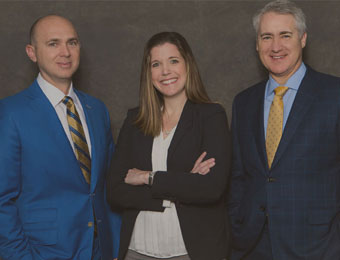What You Should Know About Rollover Accidents
What You Should Know About Rollover Accidents
Modern cars are designed to withstand many different kinds of accidents and forces, but it is still possible that a car will rollover – perhaps multiple times – under the right conditions. While the overall percentage of accidents that include a rollover is very low (2%), the death rate associated with rollovers is disproportionately high at 35 percent.
The most common causes of rollover accidents are “tripping” where the driver clips a guardrail or curb and the car flips as a result. Tripping also occurs if a driver drifts onto a sandy surface or softer soil and attempts to correct and get back on the road. Other rollovers can result from product defects, usually in tires, weather conditions including slick roads and ice, or poorly maintained roads.
The reason rollover accidents are responsible for such a high rate of deaths is because in some cases, drivers or passengers are ejected during the crash or the roof of the car collapses. While there are upgrades mandated for newer vehicles, older vehicles are not likely retrofitted and may be particularly prone to rolling over or roof collapse.
Even if the rollover accident does not result in casualties, the injuries that are incurred can be severe including head injuries, spinal injuries, and neck injuries. Medical and rehabilitation costs will be high, possibly in excess of the lifetime cap on insurance under your private insurance, if you have it. In addition to medical costs, there are the lost wages if you are unable to go back to work for some time due to your injuries.
Depending upon the reason for the rollover, you may be able to file a lawsuit to recoup some of these costs. This is particularly true if there was a blowout or a tire defect, the road was poorly maintained and hazardous, the car’s airbags did not deploy due to a defect, or another driver was at fault, causing the ultimate rollover.
Who you file against depends mostly on the nature of the cause of the accident. Poor road conditions are usually the fault of the state and any associated construction firms who are working on the road. Tire and airbag defects land squarely with the manufacturer of those products. And, of course, if another driver is at fault, then the suit would be filed against them and their insurer if they have one. It is not uncommon, either, for there to be multiple causes of the ultimate damages including another driver whose actions caused you to rollover coupled with defective airbags that failed to deploy.
Of course, in the immediate aftermath of a rollover, the most critical steps are to ensure medical treatment for all who are involved. Depending upon the severity of your injuries, you may not be able to take much ownership in this role and must rely instead on others. Getting medical treatment will also help to document your injuries in real time which can be particularly helpful later on. Finally, take everything to a qualified personal injury lawyer to evaluate your case.





Sorry, the comment form is closed at this time.